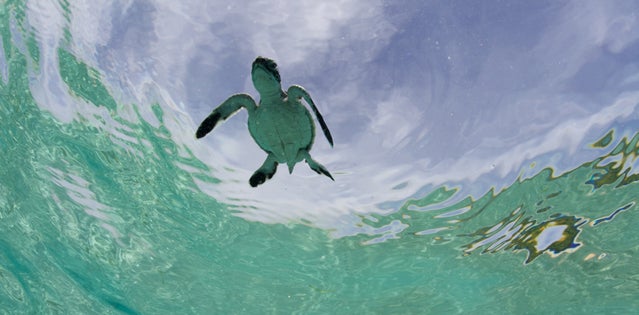
Examples of poor ocean health are too easy—unfortunately—to find in many parts of the world, especially along densely populated coastlines or in the midst of ocean gyres filled with plastic pollution. But what is the global state of ocean health? A group of marine scientists spent three years devising the , a new tool that provides some answers.
More than 60 scientists, researchers and organizations collaborated on the index, which was officially released on Wednesday. The index was designed to provide a framework and benchmark to measure the health of the oceans so that policy makers will have a point of reference to use in shaping future laws and regulations. Basically, it is intended to help us determine to what degree humans can continue to exploit the world’s oceans for food, products and tourism without diminishing their ability to sustain themselves. It sets the bar accordingly.
“A healthy ocean is not a pristine one,” says Ben Halpern, the index’s lead author and a research scientist for the National Center for Ecological Analysis and Synthesis (NCEAS). “A pristine ocean is not a practical goal. To strive for that is a futile effort and never achievable at global scale.”
The index is based on 10 indicators, or “goals,” such as tourism/recreation or biodiversity, that set various lenses through which to view ocean health. These 10 goals can be viewed at the global scale or per country, with 171 coastal countries included in the index. The United States rates horribly in the tourism/recreation goal, scoring just one out of 100. I asked Halpern what gives.
“The tourism/recreation goal is based on the number of international travelers who arrive in each country, and then we have a method for figuring out which of those travelers are going to coastal areas,” he says. Because the U.S. has such a large interior and because the data used is global, it scores much lower than, say, small island nations whose whole economy is tourism based. He notes that the U.S. would score higher if domestic tourism was considered, and that there may be ways to do that in the future. But for now, it’s a little screwy, he admits.
“We designed the index to adopt better information in the future. In 10 years, it will be more valuable than it is today,” Halpern said. For now, there aren't many ways to know how “sustainable” a given ocean or coastline's tourism is, aside from considering how many tourists want to be there. Halpern is confident that this will change and that the data will get better in the future. “We had to start somewhere,” he said.
Nevertheless, you’re probably keen to know what countries are the tops in the Healthy Ocean Index’s . Here they are:
1:
2:
3:
4:
5:
6:
7:
8:
9:
10:
This video gives an overview of the full Ocean Health Index:
—Mary Catherine O'Connor